1950 - 2000
- Nobel Prize for Frits Zernike (1953)
- Donald W. Smits and the ZEBRA (1958)
- Three areas of University buildings (1958)
- Nobel Prize tragedy (1959)
- The Qumran Institute and the Dead Sea Scrolls (1961)
- 'Democratization' (1972)
- Education experiment in Leeuwarden (1980)
- Ritzen Koeriers uses student transport pass (1990)
- 400 years Faculty of Law (1996)
- First molecular motor Ben Feringa (1999)
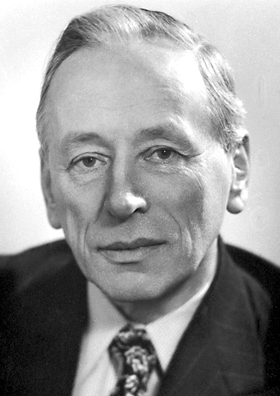
1953: Nobel Prize for Frits Zernike
In 1953, the Groningen chemist Frits Zernike won the Nobel Prize for physics. Chemist? Yes indeed, Zernike was originally a chemist; later in life he expanded his territory to physics with in between an outing to astronomy as assistant of the famous J.C. Kapteyn. His interest shifted from mathematical and statistical physics to the improvement of instruments. He was a versatile scientist, which was exactly what made him well suited for the development of instruments. He understood like no one else what actually happened inside the apparatus. One of the many instruments he developed was the phase contrast microscope, with which for the first time details such as mitosis could be observed. Zernike first theoretically engineered the entire undertaking and then actually build the instrument. This incredible feat earned him a Nobel Prize. An item of the Dutch "Polygoon journaal" of 1 November 1953 shows the Nobel prize winner at his house in Groningen where he receives numerous telegrams.
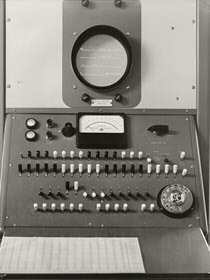
1958: Donald W. Smits and the ZEBRA
Donald W. Smits was the first director of the computing centre of the Groningen university and he was a driving force behind the computerisation of the university. In the early fifties, he still did all his calculations at Niemeyers, a tobacco company, because they had a tabulating machine. In 1958 the university spend 150.000 guilders on their own computing engine: the ZEBRA, which is a Dutch acronym for ‘very easy binary computing device. With as much as 32 kb of internal memory it could make 500 calculations a second. Data had to be entered by a punched tape and when the machine was operating one could hear it outside; because of the huge investment this was done basically twenty four seven.
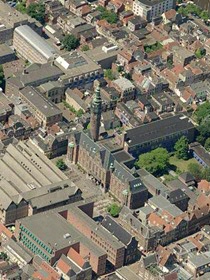
1958: Three areas of University buildings
In the second half of the 20th century, the university witnessed a rapid growth. Therefore, in 1958, a plan was developed to focus the university buildings in three areas: in the city centre surrounding the Academy building, on the hospital grounds, and on a yet undeveloped terrain outside the city: Paddepoel. The latter was destined to become the home of all beta studies, because they would need more space than the inner city could provide for. Even though, overall, this plan has been successfully achieved, it met with the odd obstacles. The biologists, for example, needed decent soil for their plants, so they moved south, to Haren. The astronomist couldn’t work with all the city lights and they moved to rural Roden. In the city centre it wasn’t much different. There was conflict over the old theatre ‘De Harmonie’, which was eventually demolished (in 1972) to make place for the Law and Arts faculties; only the name and the facade remained.
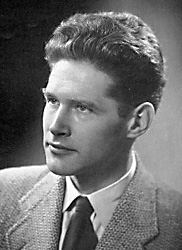
1959: Nobel Prize tragedy
Shortly after the war, the American chemist Libby discovered the C14 dating technique. Hessel de Vries, a student of the physicist Dirk Coster, fine-tuned this method to an accurate technique that could be practically implemented. The influence of this method on archaeology would surely justify a Nobel Prize and it was believed by many that De Vries would have a good chance of winning one. It however turned out otherwise. De Vries fell in love with his secretary. She rejected him because he was married and subsequently applied for another job. De Vries could not live with this and in 1959 he first killed her and then himself. One year later Libby won the Nobel Prize.
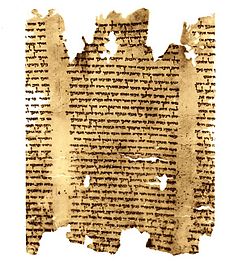
1961: The Qumran Institute and the Dead Sea Scrolls
Between 1947 and 1956, almost thousand manuscripts dating from the period around and before the start of our era have been discovered in the caves around Qumran. These manuscripts, the Dead Sea Scrolls, offer an unique insight into the beginnings of what later is called the Bible and are therefore one of the most important archaeological findings in history. Since its inception in 1961, the Groningen based Qumran Institute, currently led by Prof. dr. Mladen Popović, has been one of the most important international institutions for research towards the Dead Sea Scrolls and (early) Judaism. After the discovery of the Dead Sea Scrolls, the Netherlands obtained the rights to study the material found in Cave 11, also known as the ‘Dutch Cave’ because of a substantial financial contribution from the KNAW and ZWO. Since then, the Qumran institute has been in charge of the publication of the Dead Sea Scrolls.
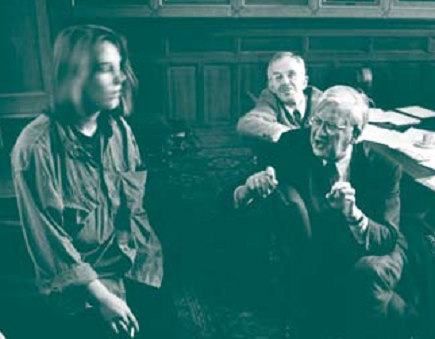
1972: 'Democratization'
The ‘democratization’ at the end of the sixties marked a rigorous change in the relations between students and professors. Up until then, student associations functioned as interlocutors of the university government, who were only marginally consulted. As a first experiment towards democratization the university started in 1968 with a so-called ‘Tussentijdse Bestuursvorm' (TBV, an interim form of government). This ‘polder model’ combined elements from the traditional form of government and more modern views (resulting in for example the appointment of a student-member in the executive committee). Following the ‘Wet Universitaire Bestuurshervorming 1970’ (WUB: Law of reforming the university governance), the university established a University Council of which the first meeting was held in May, 1972. This council operated according to the so-called ‘harmoniemodel’, a model allowing maximal staff and student participation, within the limits of the WUB. The model is still active today.
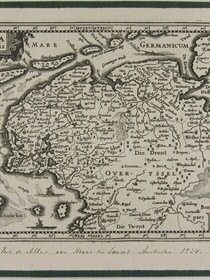
1980: Education experiment in Leeuwarden
It received critical progress reports and had several administrative problems. Still, in 1980, the future of a general faculty in the nearby Frisian capital of Leeuwarden seemed to be taking a firm hold. It was a cooperation between the Agogische Academie Friesland and the University of Groningen, by the name of Social Higher Education Friesland. After 165 years Friesland finally had an academic faculty again. However, the positive outlook in 1980 soon proved to be wrong: in the same year the faculty awarded its first diplomas, with disastrous results. The press symbolically ripped the theses apart, because the quality of the education was thought to be far below standards. The final evaluation report was aptly named ‘The tragedy of good will’. Interest in and financial support of the experiment vanished. On 8 February 1983 the faculty was abolished. Nonetheless, the university still aims to stimulate academic education in Friesland. A new and promising initiative was started in 2011. The University Campus Fryslân aims to bring about a qualitative and inspiring academic network in Friesland.

1990: Ritzen Koeriers uses student transport pass
Under leadership of three enterprising students of economics, an ingenious company was set up. The public transport card for students had just been introduced and three Groninger students saw a cheap way of delivering packets. Students gained a side-job and customers had a less costly way of sending packets. The small enterprise gained a lot of (national) media attention, especially when one of the three students appeared to be a prince of the Dutch royal house: Bernhard junior, son of princess Margiet.
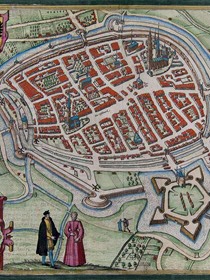
1996: 400 years Faculty of Law
In 2014 we celebrate the 400th anniversary of the University of Groningen. Nevertheless, in 1996 there was already a short commemoration of 400 years existence of the law faculty. On the 6th of July 1596, Mellus Theodorus Brunsema officially opened the faculty of Law with his oration 'Oratio pro nova juridicae facultatis Groningae Instituta praelectione'. At that time, the city of Groningen occupied a sovereign position within the Dutch Republic, and, as such, the city felt a clear need for a faculty of Law. In its pre-university years, the faculty was managed by Brunsema alone: a one-man faculty! In 1614 the faculty was incorporated in the newly founded university.
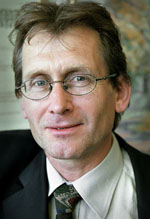
1999: First molecular motor Ben Feringa
Ben Feringa has been a Professor of synthetic organic chemistry at the University of Groningen since 1999. As a chemist, Feringa designs and synthesises complex molecules. These molecules can, for example, be used as switches, motors, or catalysts. He is the inventor of the first molecular motor to be powered by light. In 1999, his research group received worldwide acclaim for their molecule that behaves like a propeller under the influence of light. In 2004, Feringa was awarded the NWO Spinoza Prize for, among other things, his work on molecular motors and extremely selective catalysts.
| Last modified: | 30 January 2024 1.26 p.m. |
More news
-
16 April 2024
UG signs Barcelona Declaration on Open Research Information
In a significant stride toward advancing responsible research assessment and open science, the University of Groningen has officially signed the Barcelona Declaration on Open Research Information.
-
02 April 2024
Flying on wood dust
Every two weeks, UG Makers puts the spotlight on a researcher who has created something tangible, ranging from homemade measuring equipment for academic research to small or larger products that can change our daily lives. That is how UG...
-
18 March 2024
VentureLab North helps researchers to develop succesful startups
It has happened to many researchers. While working, you suddenly ask yourself: would this not be incredibly useful for people outside of my own research discipline? There are many ways to share the results of your research. For example, think of a...

